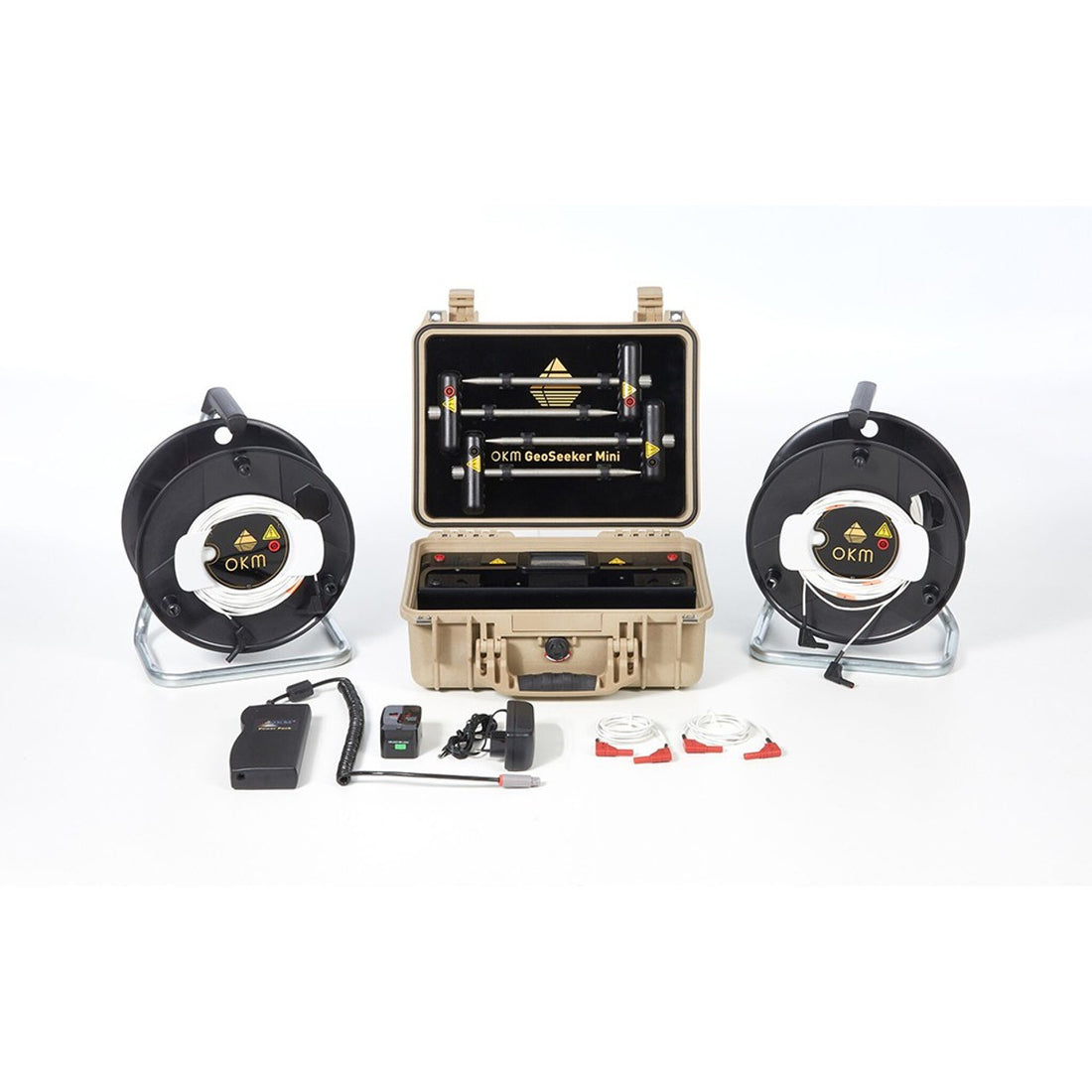Buying a Historically Significant Home
by Metal Detector team
It is difficult to determine whether a house is considered historic or old house depending on its age. To be considered historic, a home must be at least half a century old and connected to significant historical events or people. It is possible to find out if a home is a historic house by checking the approved landmarks in the area. Moreover, there are several great resources available on the internet, such as the National Trust For Historic Preservation's A Brief Guide to Historic Homes.
Some do's and don'ts when buying a historically significant home include:
- Do Acknowledge the Home’s Historic Features
- Don’t Skip the Research
- Do Seek Assistance From Professionals
- Don’t Be Afraid to Renovate
- Do Conduct Your Own Walk-Through
- Don’t Overlook the Underlying Cost
- Do Get a Home Inspection
Occasionally, when historically significant and better homes become vacant, they can be torn down. Some are deemed local landmarks by the historic preservation commission, while others are purchased and renovated. This article will provide those considering purchasing a historic home with a list of do’s and don’ts to consider when making the purchase.
Do Acknowledge the Home’s Historic Features
One of the beauties of owning a house with a historic designation is showcasing its original features. Embracing your historic home's original features will allow you to enjoy the home’s charms and features.
Restoring these features is often a better choice than renovating them. Renovating parts of your home is easier than completely restoring them. In some cases, original features are required to be preserved by local municipalities, like the front facade, the ceiling height, or the wood floors.
Local laws regulate the operations of historic residences. That implies home buyers and the current historic homeowner can't modify or add to their houses without city permission. When renovating, pay attention to how you can preserve as many historic characteristics as possible.
Don’t Skip the Research
Some research often involved in purchasing historic houses include:
- Blueprints
- Tax records, and
- Building permits.
Be sure to pay attention to what has already been done and whether it complies with the coding specifications. Look online for local historical district groups or societies if you want to conduct your research on your historic home. Details about the properties in your neighborhood that they manage are often readily available. Investigate public records and real estate featured listings to learn about previous owners and any modifications made to the property.
Be aware of the restrictions placed on homes in historic districts, such as design review boards, design guidelines, and covenants. These rules can often be found at city hall or your local historical society. You can also look for related posts or related articles when researching homes similar to yours.
It is a fact that to be listed on the National Register of Historic Places, it must be listed for reasons of historic significance, architectural quality, or archeological significance." They can also be included if they were used by famous individuals or events or if they are already representative of a specific architectural style. According to the U.S Department of the Interior, homes must meet at least one of these criteria to qualify for inclusion on the list. To find out if your home qualifies, contact your state historic preservation office (SHPO).
New York's State Historic Preservation Office, for example, offers a comprehensive list of criteria for inclusion in the National Register. They must be at least half a century old or older and have "qualities that convey their significance to American history, architecture, archaeology, engineering or culture." Further, they must be associated with events that are considered important in the state or national history. South Carolina offers a similar list of criteria, which can be found here.
A preservation easement is a legal agreement allowing property owners to preserve their buildings or land for future generations. They are often used when a building is threatened with demolition or when there is concern over its condition. Easements may be granted to protect historic properties, but they also benefit non-historic properties. For example, they can help ensure that new developments will not harm nearby wetlands or streams.
Do Seek Assistance From Professionals
Hiring professionals with experience in selling, renovating, and remodeling historic homes is essential. Contractors with historic home renovation experience can help you identify and address any issues that arise and provide insight on design, planning, and building.
Hiring less than quality contractors to work on your home can lead to problems, including the need for costly renovations or expensive mistakes down the road. You need to make sure that whatever type of project you are working on, it is handled with care and skill.
Historic neighborhood areas in the United States:
- New Orleans' French Quarter,
- Plantation Homes of New England
- One of New York City’s 141 Historic Districts
- San Diego's Gaslamp Quarter
- Aberdeen Historic District in North Carolina
- Savannah's Historic District, and
- Charleston's Rainbow Row; has been designated as historic places
- In San Francisco, Mission Dolores has the oldest surviving structure.
Be sure that your contractor is also well-versed in meeting guidelines if you live in a National Register Historic District or are considering buying a home on the National Register of Historic Places. The governing bodies in these neighborhoods often have strict requirements for preserving a historic home's history, such as the National Historic Preservation Act, a law intended to protect the nation's historic sites. If your home has extensive gardens, real estate values are often higher, and with it, land values and taxes. Buying a historic building or older home certainly involves a lot of considerations.
For example, Preservation South Carolina, a nonprofit organization that has been operating in the state’s historic districts since 1990, is focused on preserving historical significance in irreplaceable structures. If your home is in one of these areas, a contractor that is well versed in historic buildings and homes is a must.
Don’t Be Afraid to Renovate
When you are getting started, locate your property boundary markers. You can easily locate these property pins with a metal detector. This will help you understand where your property begins and ends. Some people may be hesitant about remodeling or renovating their older homes. However, sometimes renovations are necessary to keep the home safe and up to code. It is often necessary to make improvements to old homes to prevent them from deteriorating, and many of these improvements can increase the property value of the historic home.
While some projects may need to be done to make your home functional and bring it up to code, consider whether these changes will impact the historic character of the home. Some historic homes are deemed officially historic but may not be able to be renovated. This is the case with a lot of landmarked homes.
Many historic homes and buildings will have a septic system. If your historic place does have a septic, be sure that you locate the area before doing any digging or renovations. Keep in mind, it is possible in some scenerios to use a metal detector to locate some types of septic systems. You should also have the property marked by calling 811 to identify all utilities on the property. This will ensure that you are digging safely and do not destroy any utilities on the property.
Renovations can also help change up a home’s original aesthetic look and may even result in your own personal touch being added to the house. There is a line between necessary renovations and making changes that aren’t necessary/just for looks. Unlike new construction, when you're dealing with a historic home, you'll need to carefully consider what can and cannot be renovated according to local and city governments.
If you purchase a historically significant home, there are also certain things you should never do since these changes can detract from the historical value and appearance of your home. Among these are:
- Removing or adding interior walls not present in the original structure
- Wholesale renovations that completely change the style and aesthetic of a house to something unrecognizable from its original state
When renovating or making structural changes to a historic home, homeowners must stay true to its historical significance, history, and details.
Do Conduct Your Own Walk-Through
You should consider doing a walk-through of the property before beginning renovations, specifically in older properties, for many reasons, including:
- It can give you an idea of the scope of renovations needed
- You may find valuables buried in or around the historic property
- To discover more information on the property boundaries
- Finding potential leaks or issues on the property
- It can also help you understand what repairs, such as flooring or plumbing, might cost and which areas would need immediate attention.
- You may discover items on the property that previous property owners left behind.
Doing a walkthrough of your historic property before renovating will help you avoid costly mistakes in the future. Buying a historically significant home, however, can pose a few potential problems. You should know what they might entail to best prepare yourself.
Don’t Overlook the Underlying Costs
Owning a historic structure entails unique costs and responsibilities when compared to a modern home. There are multiple underlying costs associated with owning a historic home. Some of these costs include:
- Special real estate building inspections
- More strenuous permitting processes
- The renovation itself can be costly as historic homes may require hard-to-source materials,
- Specialized labor
- Specific restoration techniques to maintain the historical integrity of the home
- Real estate property taxes on a historical property are higher than those on a regular home.
- Higher maintenance costs,
- Structural repairs
- Cost of permits and insurance.
- Maintenance of the homes exterior in keeping with the era
Extra costs associated with historic homes are inevitable, but it is important to be aware of them and understand how they will affect your historic property and financial situation.
By overlooking these costs, you can end up paying much more for a historical home than you bargained for. When buying a historic home, there are several things that you should keep in mind before purchasing.
You should ensure that the property that you are considering is within your budget and meets your needs. This will ensure that both the investment in the house pays off monetarily and emotionally while also minimizing additional costs associated with owning a historically significant home.
Make sure that you utilize your historic home to the fullest extent possible to offset any costs. If you are planning on purchasing a historically significant house, there are a few things that you need to keep in mind. Don't just look at the initial purchase price when narrowing your search, but also consider any additional costs you may incur during ownership. Make sure your budget can handle all of these associated fees before moving forward with an offer on the house. Also, it may be wise to speak with your bank or lender about how they feel about financing this type of property before committing yourself financially to it.
Do Get a Home Inspection
Home inspections are not only beneficial to the home buyer but are also required by most lenders. They include a professional analysis of the home's condition to identify any defects or needed repairs. Home inspections include information about the property's history, such as past renovations and any changes made since. They typically cost $300-$500, but it is well worth the money.
Inspections are necessary to understand the true condition of the home and what you are getting yourself into. Inspectors can easily identify if there are any issues with your property's structure, foundations, condition, etc., which can give you a hint of whether or not this house is right for you.
Remember that inspectors act according to their expertise, and their job is to find problems so that they may be fixed before you buy. Visit the American Society of Home Inspectors' website to find a qualified home inspector or ask your real estate agent.
Before buying a house, you must read all documents related to the house, including the purchase contract, covenants, etc. If you're not certain you understand these documents completely, or if there are particular parts you don't understand, consider asking an expert such as a lawyer or real estate professional for assistance. When dealing with this type of matter, an experienced real estate agent or lawyer can be of great assistance.
© 2022 Detector Electronics Corp.









